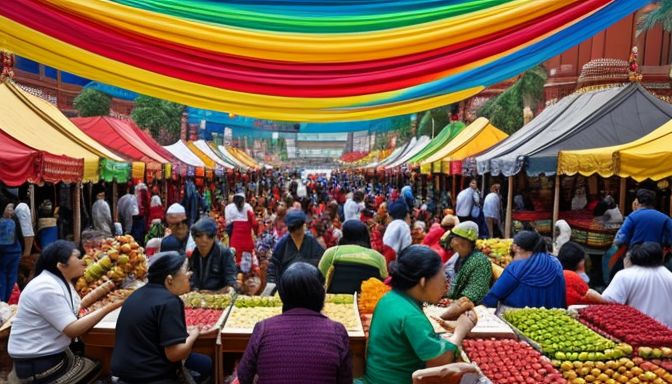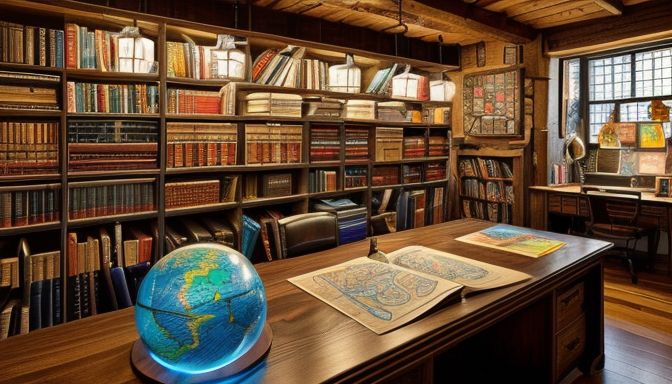Are you ready to elevate your storytelling to new heights? Worldbuilding is the secret sauce that can transform a simple narrative into an epic saga. Think of your story as a grand stage, and the world you create is the backdrop that brings everything to life. From the rolling hills of a fantasy realm to the bustling streets of a futuristic city, the details you weave into your universe can captivate your readers and keep them coming back for more.
To get started, consider the geography of your world. Is it a land of towering mountains and deep valleys? Or perhaps a sprawling desert with hidden oases? Your setting shapes the characters’ experiences and influences their decisions. Next, dive into the politics of your universe. Every great story has conflict, and understanding the power dynamics at play can add layers of intrigue. Imagine the tension between rival factions, or the struggle of a hero against a tyrannical regime.
Don’t forget about mythology and culture. Crafting unique belief systems and traditions can breathe life into your world. Consider how these elements affect your characters’ motivations and interactions. By blending geography, politics, and culture, you create a rich tapestry that immerses your readers in a world they won’t want to leave. So, grab your pen, unleash your imagination, and let these worldbuilding hacks guide you on your journey to creating unforgettable stories!
Creating a Compelling Setting
When it comes to storytelling, the setting is not just a backdrop; it’s a living, breathing entity that shapes your narrative. Think of it as the stage where your characters perform their drama, and just like a well-designed stage, it can evoke emotions and set the tone for your story. So, how do you create a setting that resonates with readers? Let’s dive into some innovative techniques!
First, consider the geography of your world. Is it a sprawling desert, a dense forest, or perhaps a bustling metropolis? Each landscape offers unique challenges and opportunities for your characters. For instance, a desert setting might create a sense of isolation and struggle, while a city could be a hotbed of intrigue and conflict. Use descriptive language to paint a vivid picture; your readers should feel the heat of the sun or the chill of a winter’s night.
Next, think about the politics and mythology that govern your world. Are there ruling factions, ancient prophecies, or cultural traditions that influence the characters’ choices? This layer of complexity can lead to rich storytelling. For example, imagine a society where power is derived from the worship of ancient deities—how might that shape the characters’ beliefs and actions?
Finally, don’t forget to weave in cultural elements that reflect the diversity of your world. Consider how language, cuisine, and art can enhance the authenticity of your setting. By creating a tapestry of experiences, you invite readers to immerse themselves fully in your narrative. Remember, a compelling setting is not just a place; it’s an integral part of the story that can captivate and enthrall!

Developing Unique Cultures
When it comes to worldbuilding, is like adding vibrant colors to a black-and-white canvas. Each culture you create can serve as a foundation for your story, influencing characters, conflicts, and even the plot. Think about it: a character raised in a strict, hierarchical society will act differently than one from a more egalitarian background. So, how do you go about crafting these intricate cultures? Let’s break it down!
Start with the basics: geography. The landscape shapes the way people live, work, and interact. For example, a culture thriving in a lush valley might focus on agriculture, while a society in a barren desert could prioritize trade and resourcefulness. Once you have your geography, consider the political structures. Are they ruled by a monarchy, a council, or perhaps a democratic system? This will determine how power dynamics play out among your characters.
Next, dive into the mythology and beliefs of your cultures. What do they worship? What legends do they tell? This aspect not only adds depth but also provides rich material for conflict. For instance, a character who questions their society’s beliefs can create tension and drive the story forward. Remember, culture isn’t just about traditions; it’s about relationships and how people navigate their world.
Lastly, consider the interactions between different cultures. This can lead to fascinating conflicts and alliances. Think of it like a game of chess—each move can change the outcome of your narrative. By paying attention to these elements, you’ll create a world that feels alive and compelling, drawing your readers deeper into your story.
Frequently Asked Questions
- What is worldbuilding?
Worldbuilding is the process of creating an imaginary world for your story. It involves designing settings, cultures, and histories that enrich your narrative and make it more immersive for readers.
- Why is a compelling setting important?
A captivating setting can draw readers in, making them feel emotionally connected to the story. It serves as the backdrop for your characters’ journeys and can enhance the overall theme of your narrative.
- How can I develop unique cultures in my story?
To create unique cultures, think about their customs, beliefs, and social structures. Consider what makes them different from each other and how these differences can lead to conflicts or alliances among characters.
- Can I use real-world cultures as inspiration?
Absolutely! Real-world cultures can provide a rich source of inspiration. Just remember to approach them with respect and sensitivity, ensuring that you portray them authentically and avoid stereotypes.

Recent Comments